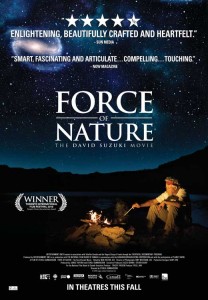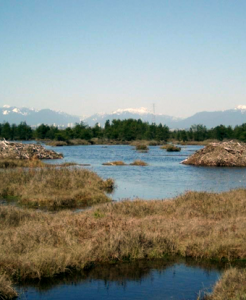A few interesting stories have arrived in the media this week involving TransLink, transportation planning, and tolls.
The tone of this story was surprising, especially when juxtaposed against the opinion piece that the editor of that same paper produced last month. The ”danger” facing the NFPR is that it is a bad idea that does not fit in our community. Indeed, unless TransLink comes back with something substantial to mitigate the traffic impacts on all of New Westminster, from Brunette to Queensborough, then this plan may indeed have to go away. I do not think that is something to fear, however, it is the new reality of transportation planning. Clearly, the UBE as proposed in December did not fit the bill; we need a better solution.
The days when you could plow freeways through neighborhoods ended in Vancouver in the 70’s; perhaps it will end for the rest of the North-of-Fraser area in the 10’s. The South-of-Fraser communities will have to come to their own epiphany about this, and there are groups trying to usher that day along, but I am afraid as long as Diane Watts and Kevin Falcon are in charge, they will be mired in asphalt.
The Mayor is back to talking about tunnels and tolls, which are all well and good, but this raises as many questions as it answers. Is a graded, 2-km long 4-lane vehicle tunnel the best way to spend $1 Billion? Will a tunnel serve the primary purpose of a goods movement corridor if it will not be permitted to transport dangerous goods? What will either end of the tunnel look like? How does this tunnel free up traffic at Queensborough Bridge (as Councillor Osterman was quick to point out last meeting as a significant part of New Westminster’s Traffic woes)? How long until the traffic expands to make the tunnel a congested, polluted mess?
I know Mayor Wright has a visionary streak in him, but I am afraid he is missing the point here. The most visionary approach to this problem is not to engineer some white elephant solution that has proven time and time again in places across the globe to not solve the problem of congestion. The visionary approach is to say “no”, to say that the livability of our City is too important to add more traffic to the mix.
Then I saw this article towards the “filler” pages of the Leader, which features The Minister of Transportation and the Mayor of Surrey trying to out-Conservative each other.
I’m all for sober second thoughts, but Mayor Watts is off the mark here. She wants a new bridge to support her continued unsustainable development based on last century’s “car in every garage” model, but she doesn’t want the poor beleaguered Surrey citizenry who choose an auto-based lifestyle to have to pay for the infrastructure to support it.
Her argument that Surrey bridges shouldn’t be tolled because Vancouver bridges are not tolled (which she christens a “fair tolling” policy) is simply ridiculous. It ignores the fact that she is pushing automobile-dependent development that will require bridges, while the City of Vancouver is reducing the need for bridges by building working alternatives, and by building more compact, complete communities. As we learned last year in Jerry Dobrovolny’s talk at the NWEP AGM, this resulted in significant decreases in cars entering and leaving the City, at the same time they enjoyed significant growth of both population and jobs.
Anyone care to contrast this with the Panorama Ridge area of Surrey? If that is how Diane wants to build her City, she can pay for her own @%&@$&* bridge.
Finally, there was this story about the perils of trying to predict traffic. I have never driven across the Golden Ears Bridge, but I have ridden a bicycle across it a few times. To me, it is a monstrosity connecting two automobile-oriented communities, and again wonder if some of that $800 Million (or $1.04 Billion, or $928.5 Million, depending on whom you ask) could have been used to build more sustainable transportation alternatives for two communities that desperately need them (Langley and Maple Ridge).
Seems the problem here is that TransLink wrote ambitious predictions about traffic load to get the PPP happening, only to be on the hook when their own predictions failed. Naturally cars are avoiding the tolls by driving around the long way. The comments in the CBC story demonstrate how people act irrationally when it comes to tolls. A commenter says it is “only 25 minutes” to drive around. and the gas cost is “not nearly that much”.
Google Maps tells us the trip from the 200th Street in Langley to downtown Maple Ridge is 16km by the Bridge, 42km by the Port Mann, for a difference of 26km. I suppose you could make that trip in 25 minutes, if it is 2am. Mid-day, you are looking at an hour at least. The average car sold in Canada gets between 7L/100km and 12L/100km, so fuel costs to avoid the bridge (at $1.10 a Litre) is between $2.00 and $3.00. The toll on the bridge? Between $2.80 and $3.90. I guess for some people, avoiding an hour in traffic is not worth a loonie. Problem is, these people are all going to drive through New Westminster over the Patullo once the Port Mann is tolled… today’s bad planners are tomorrow’s New Wesmtinster traffic crisis.
The headline “taxpayers off the hook” is a severe case of spin. Although one might not catch this from how the news articles on this were written, TransLink is going to have to pay that $63.8 Million dollars to a private corporation, which goes curiously unnamed in the articles. It is almost like TransLink and Consortium that run the Bridge don’t want to mention the recipient of the sweetheart deal. I leave that for you to Google yourself. So Translink will “find the money” to pay for this shortfall, but make no mistake that it is all taxpayers’ money. It may come from other capital projects or from reserves, but that just means $63.8 Million less to pay for new buses, new SkyTrain cars, to fill the “Funding Gap” for Evergreen, or for building Wayne Wright’s dream tunnel down Royal Avenue.

